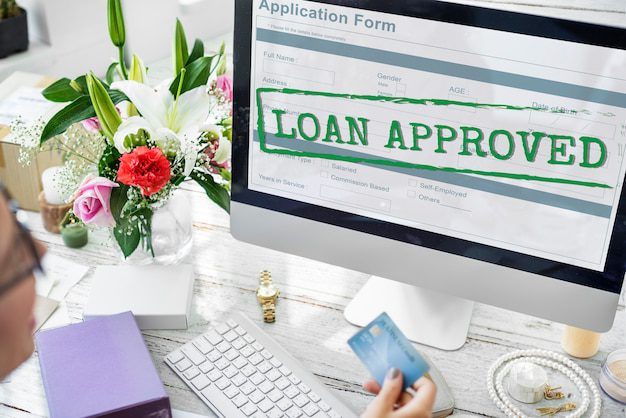When it comes to securing bridge loans, the stakes are high. Missing out on a bridge loan can halt a promising deal in its tracks, especially in competitive real estate markets. But the good news? Many of these denials could be avoided with a better understanding of common pitfalls and lender expectations.
Bridge loan lenders assess applications based on specific criteria to protect against potential losses, so even seemingly minor issues can lead to a denial.
Here are some of the main reasons for bridge loan denials — and how to avoid them.
1. Poor or Insufficient Credit History
One of the primary reasons for bridge loan denials is an applicant’s credit history. Although bridge loans don’t always require top-tier credit, lenders typically look for a reasonable credit score to feel secure that you can repay the loan. Poor credit can signal financial instability, while a history of missed payments or high debt levels may raise red flags.

How to Avoid This Issue
- Check your credit report before applying to ensure accuracy.
- Resolve outstanding debts or collections, if possible.
- Build up your score by making timely payments on current obligations.
For applicants with borderline credit, working with specialized bridge loan lenders who cater to low-credit clients can also improve their chances.
2. Insufficient Collateral
Bridge loans are often collateralized by the property in question. However, if the property’s value doesn’t meet the lender’s requirements or if there are existing liens on it, the application may be denied.
How to Avoid This Issue
- Get an accurate appraisal before applying to understand your property’s current market value.
- Clear any outstanding liens on the property to streamline your bridge loan application.
- Consider a co-borrower with significant collateral, if possible, to bolster your application.
3. Unclear Exit Strategy
An exit strategy is how you plan to repay the bridge loan, often through the sale of the property or refinancing. Without a clear, realistic exit strategy, lenders may question your ability to repay, leading to denial.
How to Avoid This Issue
- Clearly outline your plan for repayment in your bridge loan application, including estimated timelines and potential buyers (if applicable).
- Choose an exit strategy that aligns with your project timeline and realistic market conditions.
- Provide evidence for expected property sale or refinancing opportunities to reassure your lender.
4. High Debt-to-Income Ratio
Another major reason for bridge loan denials is a high debt-to-income (DTI) ratio. Bridge loan lenders review DTI ratios to gauge whether an applicant is financially overextended. If you’re juggling multiple debts, a bridge loan lender may see your application as a higher risk.
How to Avoid This Issue
- Pay down existing debt before applying for bridge loan financing.
- Refinance other loans to reduce monthly payments and lower your DTI.
- Provide additional proof of income or other revenue streams to balance your DTI ratio.
5. Lack of Verifiable Income
Since bridge loans are short-term and often require quick repayment, lenders need to see verifiable income to ensure you can meet the payments. Self-employed applicants, in particular, may struggle here if their income isn’t easily documented.
How to Avoid This Issue
- Prepare recent tax returns and bank statements to show consistent income.
- Provide contracts or revenue projections if you’re self-employed and don’t have regular paychecks.
- Consider a co-signer with verifiable income to support your application.
6. Incomplete or Inaccurate Documentation
The speed of bridge loan approval is one of its advantages, but it also means that lenders expect thorough and accurate documentation upfront. Missing documents or incomplete information can lead to quick denials.

How to Avoid This Issue
- Create a checklist of all documents required for the bridge loan application.
- Double-check all entries to avoid errors that could flag the application.
- Include additional supporting documents where relevant to address potential concerns.
7. Unfavorable Market Conditions
If the real estate market is in decline or a particular area is facing low demand, lenders may be wary of approving bridge loans. This can make it challenging to secure financing if you’re purchasing in a market that is currently unfavorable.
How to Avoid This Issue
- Research the area’s real estate trends and provide data to demonstrate potential for return.
- Consider timing your application during a more favorable market phase, if possible.
- Offer a higher down payment to reduce the lender’s risk and show your commitment.
8. Overly Aggressive Loan Amount
Requesting a loan amount that is too high compared to the property’s value or your financial profile can result in denial. Lenders may see this as unrealistic and a potential sign of risk.
How to Avoid This Issue
- Calculate your required amount precisely based on your project needs.
- Only borrow what you can realistically repay and keep your requested amount within reason.
9. Choosing the Wrong Bridge Money Lender
Not all bridge loan lenders are equal, and some may have stricter requirements than others. If you’re applying for a bridge loan with a lender who doesn’t specialize in bridge loan financing, you may face more hurdles.
How to Avoid This Issue
- Research lenders who specialize in bridge loan financing and real estate investments.
- Read reviews and reach out to potential bridge loan lenders to gauge their expertise in bridge loans.
- Consider hard money lenders who often have more flexible terms and faster approval processes, especially if you’re an investor.

For investors seeking a reliable bridge loan lender, Insula Capital Group offers competitive terms and flexible bridge loan funding solutions designed to help you overcome common application hurdles.
Our easy bridge loans are available in Florida, California, Texas, and New York, with no prepay penalties or junk fees. So, apply for a loan today and benefit from our 30 years of experience.




